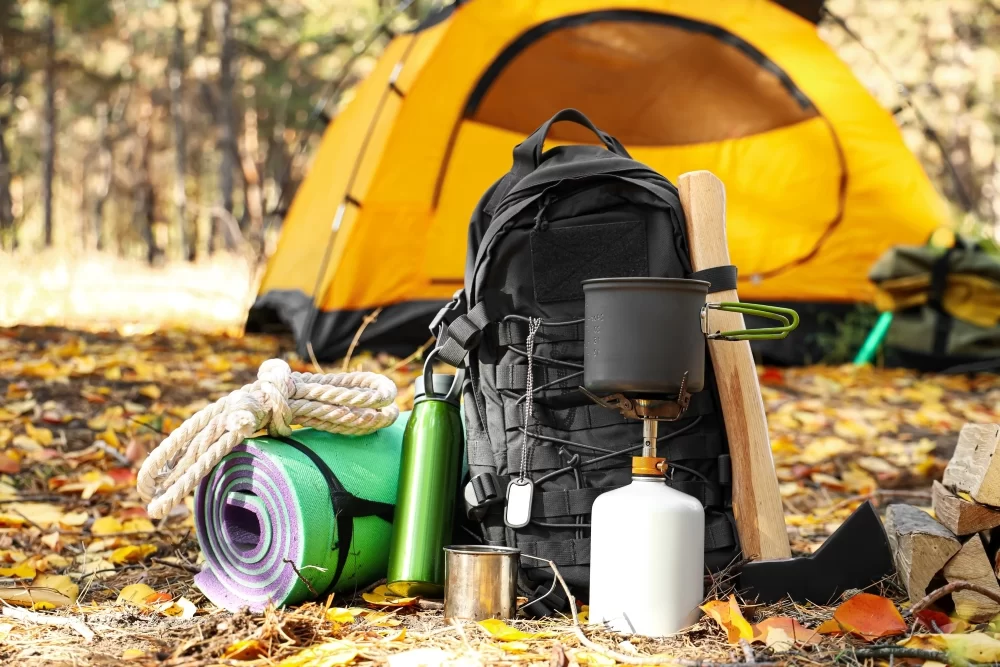How to Pack Your Gear Efficiently for Camping: Essential Tips and Strategies
- 1. Why Packing Efficiently is Key
- 2. The Ultimate Camping Gear Checklist
- 3. How to Pack Your Gear for Camping
- 4. Smart Tips for Efficient Camping Gear Storage
- 5. Expert Packing Strategies from Camping Veterans
1. Why Packing Efficiently is Key
When it comes to camping, how you pack your gear can make or break your experience. Packing efficiently is crucial for a variety of reasons: maximizing space, minimizing weight, and ensuring that you can easily access everything you need. Whether you're going on a short weekend trip or a week-long adventure, the more organized your gear is, the less time you'll spend fumbling through your backpack or tent.
Efficient packing also contributes to your overall comfort and safety. By packing your gear in a way that minimizes bulk and prioritizes easy access, you ensure that you’re prepared for any situation—whether it’s setting up camp in the rain or quickly reaching your first-aid kit after a fall.
2. The Ultimate Camping Gear Checklist
Before you even think about how to pack your gear, it's essential to know exactly what you need. Here’s a comprehensive checklist of the must-have items for any camping trip:
2.1. Shelter and Sleeping Gear
- Tent (with stakes and guylines)
- Sleeping bag (appropriate for the season)
- Sleeping pad or air mattress
- Pillow (compact or inflatable)
- Tarp or groundsheet
2.2. Cooking and Food Gear
- Portable stove or campfire kit
- Cooking pots/pans
- Utensils (spork, knife, etc.)
- Food storage containers
- Matches/lighter and fire starters
2.3. Clothing and Footwear
- Weather-appropriate clothing (layers, waterproofs)
- Hiking boots or shoes
- Hat and gloves
- Extra socks and underwear
2.4. Safety and Navigation
- First-aid kit
- Map and compass (or GPS device)
- Multi-tool
- Headlamp or flashlight (with extra batteries)
2.5. Personal Items and Extras
- Toilet paper and hygiene items
- Insect repellent and sunscreen
- Trash bags (leave no trace!)
- Camera or phone for photos
3. How to Pack Your Gear for Camping
Once you have all your gear ready, it’s time to figure out how to pack it efficiently. Here are some essential packing tips:
3.1. Use Compression Sacks
Compression sacks are a lifesaver when it comes to packing bulky items like sleeping bags and clothing. These sacks reduce the volume of your gear by compressing the contents, leaving you with more room in your pack. It’s especially useful for cold-weather gear, which tends to be bulkier.
3.2. Keep Heavy Items Close to Your Back
When packing your backpack, make sure to place heavier items (like your tent and food) closer to your back. This helps distribute weight more evenly and makes your pack feel more balanced while you’re hiking. It also keeps the center of gravity stable, reducing strain on your shoulders and back.
3.3. Pack in Layers
Just like you layer your clothing, you should layer your packing. Place frequently used items at the top or in easily accessible pockets. Items like your first-aid kit, sunscreen, and snacks should be easy to grab without unpacking your entire bag.
3.4. Keep Electronics Protected
Camping in the great outdoors doesn’t mean you have to leave your gadgets behind, but you should protect them from the elements. Use waterproof cases for phones, cameras, and any other electronics you plan to bring, and always store them in the most secure part of your bag.
4. Smart Tips for Efficient Camping Gear Storage
Once you're on the campsite, efficient gear storage is just as important as how you pack. The goal is to keep everything organized and easy to access throughout your stay:
4.1. Use Gear Bags
Instead of tossing everything into your tent or just leaving it in a pile, consider using gear bags to keep your items organized. For instance, a small bag for toiletries, another for cooking utensils, and another for personal items can make it easy to find what you need when you’re settling down for the night.
4.2. Hang Your Gear
If you're camping in a location with trees, hanging your gear on tree branches is a great way to keep it off the ground. It prevents items from getting wet in case of rain and keeps food out of reach of curious wildlife.
4.3. Dry Your Gear Before Packing
After a long day of hiking or camping in wet conditions, always make sure your gear is dry before packing it away. This prevents mildew and mold from forming and helps keep your equipment in good condition.
5. Expert Packing Strategies from Camping Veterans
Camping veterans know that packing efficiently can make a huge difference in the overall experience. Here are a few expert tips:
5.1. Pre-pack Your Gear
Before your trip, take the time to lay out all your gear and pre-pack everything. Doing a dry run allows you to check if anything is missing, ensures that your gear fits into your pack, and gives you the chance to make adjustments if needed.
5.2. Embrace the “Pack Less, Pack Smarter” Philosophy
Veteran campers often swear by the philosophy of packing less, but packing smarter. Instead of bringing bulky items that serve only one purpose, opt for multi-functional gear. For instance, a stove that doubles as a heater, or a tarp that can function as both a shelter and a groundsheet.
5.3. Don't Forget the "Just In Case" Items
While you don’t want to overpack, there are certain items that are essential for unexpected situations. Think extra batteries, a small repair kit, or even a lightweight rain poncho. These small but important items can save the day if something goes wrong.







